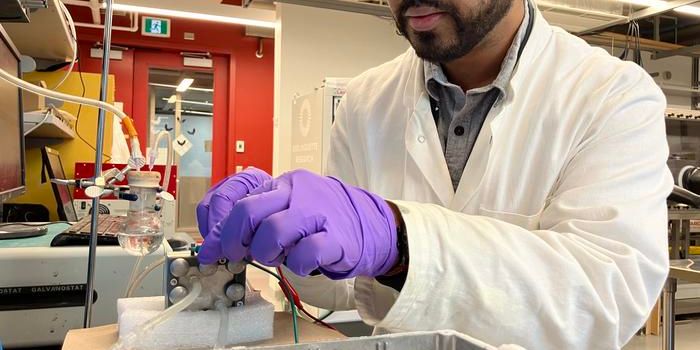Future of Hydrogen Fuel Gets a Catalyst
In a recent study published in Science, a team of researchers led by Rice University discusses a light-activated catalyst that successfully uses inexpensive raw materials to convert ammonia into clean-burning hydrogen. This study has the potential to create the markets and infrastructure for carbon-free liquid ammonia that won’t add to climate change.
Traditionally, such catalyst reactions require temperatures in the thousands of degrees, resulting in producing enormous carbon footprints. Also, producers of chemicals traditionally spend billions of dollars every year on what are known as thermocatalysts, which are non-reactive materials but are designed to speed up reactions under immense temperatures.
"Transition metals like iron are typically poor thermocatalysts," said Dr. Naomi Halas, who is a Stanley C. Moore Professor of Electrical and Computer Engineering at Rice University, and a co-author on the study. "This work shows they can be efficient plasmonic photocatalysts. It also demonstrates that photocatalysis can be efficiently performed with inexpensive LED photon sources."
"This discovery paves the way for sustainable, low-cost hydrogen that could be produced locally rather than in massive, centralized plants," said Dr. Peter Nordlander, who is a professor in the Department of Physics and Astronomy at Rice University, and a co-author on the study.
This study is the result of years of hard work between Dr. Halas, Dr. Norlander, their students, and other collaborators, with the goal of identifying non-precious metal alternatives for both reaction-speeding halves and energy-harvesting antenna reactors. They demonstrate in this study that antenna-reactor particles comprised of iron and copper demonstrate high efficiency when it comes to converting ammonia.
"In the absence of light, the copper-iron catalyst exhibited about 300 times lower reactivity than copper-ruthenium catalysts, which is not surprising given that ruthenium is a better thermocatalyst for this reaction," said Dr. Hossein Robatjazi, a PhD. alumnus from Dr. Halas' research group who is now chief scientist at Syzygy Plasmonics in Houston. "Under illumination, the copper-iron showed efficiencies and reactivities that were similar to and comparable with those of copper-ruthenium.”
"This is the first report in the scientific literature to show that photocatalysis with LEDs can produce gram-scale quantities of hydrogen gas from ammonia," Dr. Halas said. "This opens the door to entirely replace precious metals in plasmonic photocatalysis."
Sources: Science
As always, keep doing science & keep looking up!









